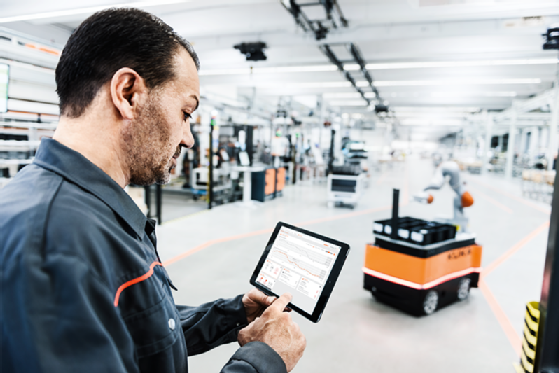
IoT and robotics, evolving together
While robotics for automation has existed for decades, adding IoT into the mix has changed the game for the industry.
Bringing IoT to a factory floor is as much about robots as it is about any other class of device. Meanwhile, robots are more attractive in their own right because labor costs are rising globally. Although robotics for automation generally focuses on movement and manipulations, IoT and robotics involves a world of devices in the field -- devices that depend on electronic sensors and software.
"A lot of companies have outsourced for low-cost labor, but labor in China is going up in cost by 15% a year," said Jim Lawton, COO at Rethink Robotics Inc., a company that focuses on designing robots that work well with humans. In fact, he noted, almost every manufacturing company he has spoken with in recent years complains about the lack of labor; temporary help firms are hired to bring in workers and by lunch time, half of them are gone, he said.
"The average age of workers in manufacturing is 58 because it isn't a field millennials even think about," he added. As a result, companies are desperate to address the problem -- and despite capital costs and limits on the technology, they are increasingly investing in robotics for automation. In turn, those robotic investments are often matched and sometimes melded with investments in smarter, IoT-equipped factories.
"From where I sit, it is clear that all the major robotics companies are very involved in IoT efforts," said Jeff Burnstein, president of the Association for Advancing Automation, parent group of the Robotic Industries Association. For example, he said, robotics giant Fanuc is focusing on delivering zero-downtime robots that can alert management when a breakdown is imminent and better schedule their own maintenance. IoT sensors are the key to this emerging and important capability, he noted. Likewise, ABB, another big force in robotics, is emphasizing the future "digital factory," which builds on IoT capabilities integrated with robotic devices.
On the other hand, Burnstein added, smaller companies within the user community remain overwhelmed by both IoT and robotics and are still largely unsure about what to do.
Andy Chang, director of product marketing at Kuka Aktiengesellschaft, a German manufacturer of industrial robots and factory automation products, said the past 10 to 20 years have seen a gradual evolution for both automation and robotics. "Because of the new computation power and lower costs, we have sensors and actuators that can be more attainable for a much wider range of applications," Chang said. That is often combined with the rise of the internet and the ability to adopt internet-specific functionality and feature sets like cloud and mobile. "We see now a tremendous opportunity for the industry in general to leverage these key technologies," he added.
Chang said the company's operation in Texas, particularly, has been focusing on cloud, web and mobile to augment mechanical and mechatronic technologies and better use IoT. The company has recently launched its first connected robot products, called Kuka Connect, "bringing the technology to the masses in the industrial and research space," he said. As the company describes it, Kuka Connect is a cloud-based software platform that allows customers to access and analyze their robots' data on any device.

"The way we see it, robots are really part of the internet of things," said Tom Galluzzo, founder and CEO of IAM Robotics, which makes "the world's first fully autonomous mobile manipulation robot for supply chain and industrial material handling.
"We see robots as, effectively, mobile sensors with some capacity to act on the world. In our case, we have mobile manipulation robots that can move and hover and pick and move things around," he said, adding that industrial IoT is a big part of the future; he sees progress into both the commercial and consumer-retail world, with robots working in-store and stocking shelves.
According to Galluzzo, the biggest challenge for IoT and robotics isn't so much technical -- fitting together disparate parts -- as it is making the business case for investment. He speculated that there could be 10,000 different kinds of sensors available, but questioned whether there is really a need to have all of them able to share data on the same platform or operate with a plug-and-play capability. Taking cameras as a case in point, he said it would be ideal if all cameras could plug into the same platform, but the fact that they can't isn't holding up adoption or deployment. The same logic is probably true with IoT and robotics, he added.
Galluzzo said robots, including those made by IAM Robotics, can be connected through the internet and IoT. "Our robots are out there collecting statistics about themselves and we can report that data to the cloud and then use it to analyze performance and make sure the machines are up and operations are going smoothly," he said.
Looking at the intersection of IoT and robotics, Lawton said he sees greater integration between the two as an important goal. Returning to his comments about the labor market, he said IoT integration isn't the first thing that concerns customers. "They need to get a job done and they need to replace a human currently doing that task," he said.
Lawton says Rethink serves a broad market of manufacturing companies of all sizes -- and their needs haven't changed much over the years. Broadly speaking, robotics for automation that help companies make materials and products has been around since the 1960s, "but most of the tasks in manufacturing still can't get done by the robots on the market; only a very small percentage of real tasks are being performed by robots and even there, mostly within the U.S.," he said. Where robots are successfully deployed, they are dominant, however. Lawton said about 65% of robots in manufacturing are involved with welding and painting.
And that brought Lawton to his central argument: In his world, robots are generally seen as one-off replacements for people; that's how purchasing is justified. That also implies that robots ought to fit into a human-dominated workplace as easily as possible. "If we have a desire to automate through robotics but don't feel we can, that probably means we need a different kind of robot," he said.
"We are still early in the industrial IoT," Burnstein said. "I think people are trying to figure it out, but the big guys in the user community seem to have a handle on it."







